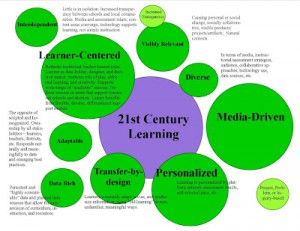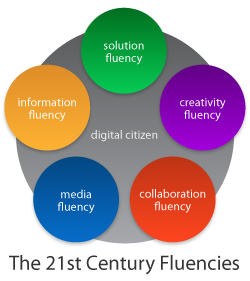
Digital Bridges for Learners
Ana Cristina Pratas
CristinaSkyBox, 27 September 2012
Although I have always tried to reach out individually to students, whether through their preferred learning style, topics which related to their social environment and interests, or with activities they enjoyed in class, never has there been a point in time when the emphasis of learning was so learner-centred as now. With the increasing implementation of mobile tech, learning is revolving around the student: with their iPads, they can work calmly through their iBooks or create their own book with materials which they choose and are relevant to both themselves and their course work.
In turn, this also has implications for the teacher – new roles in the classroom and often new approaches and patterns in teaching. However, with all the freedom of learning, there are hiccups which also occur. How willing are students to (initially) take on the responsibility for their learning, particularly when they have grown up in cultures where rote-learning was customary or where they were comfortable in shifting responsibility of their learning outcomes to teachers?
All freedom demands responsibility and accountability – characteristics which students are not always ready to take on board.
Freedom is also a learning process and bridges need to be built, put in place for both learners and teachers.
Full post and two graphics below the line.
It is far too simple to expect learners to take on mobile learning, (for instance) and begin being “creative” and “accountable”. Often I have found that students do not read the screen. Bridges need to be built. Bridges to reading instructions on the screen, bridges to learner autonomy. On the one hand, a teacher may be fortunate when a learner is enthusiastic and brings suggestions to class – for instance, when a student uses an app to create a short movie without the teacher setting it as a task and then shares with the class how to use that app. On the other hand, these initiatives are not always ingrained in students and it is up to the teacher to introduce apps for tasks, explaining step by step how to use them. From reading the screen, knowing where the information will be (for example, sign-up, register etc) to personal creation of content, students need learning bridges. Digital literacies may surround us, but to become literate, one needs practice, time and guidance.
Pathbrite creates personal portfolios, and though it may seem more appropriate for anyone already with a career, I think it is good practice for students to use, as it provides valuable practice in screen reading.
Pathbrite serves as an interesting personal card to share with others, but it also is a personal curation of an individual. Even if a student is 16 or 18 years old, they can practice creating these personal portfolios and as they mature and change, go back and edit their profile. Above all, the focus is on the learner, their interests and while they create, they are also learning basic digital skills.
readImagine promises to be a ground breaking reading experience to encourage young learners to enjoy reading.
Each reader will be given a tree house portal where they can select and collect books they are interested in. There is support for educators and parents as well, which helps the young reader. With the promise of collaboration among readers and interactive books, readImagine may become one of the most popular reading sites about to launch.
Although the year 2012 is now heading towards its end, 21st Century Learning is still discussed and talked about as if something new. Many characteristics are not entirely new – the medium of using digital tools for learning, consuming content and creating content, however, is new. Because I began reflecting on learning bridges for learners, I'd like to share this chart by Terry Heick:

>How do you foster these characteristics in your classrooms?
Further References:
ABC – The 21st Century Learning Model
9 Characteristics of 21st Century Learning – Terry Heick
The 21st Century Pedagogy Teachers Should be Aware Of
The Syllabus and a 21st Century Education




